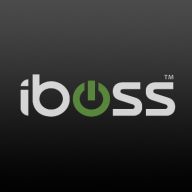


AWS Directory Service and JumpCloud compete in the identity and access management category. JumpCloud edges ahead due to its broad feature set, which provides flexibility suited to mixed IT environments.
Features: AWS Directory Service is valued for its seamless Amazon Web Services integration, robust security features, and compatibility with Microsoft Active Directory. JumpCloud stands out with cross-platform identity management, a zero-trust security model, and device management capabilities fitting diverse IT needs.
Room for Improvement:AWS Directory Service could improve in its user interface design, cross-platform support beyond AWS, and integration with non-AWS services. JumpCloud would benefit from refining its documentation, enhancing advanced analytics capabilities, and providing more granular access controls.
Ease of Deployment and Customer Service:AWS Directory Service offers simplified deployment through its integration with AWS infrastructure but demands strong AWS knowledge. Its customer service efficiently supports needs within the AWS ecosystem. JumpCloud provides straightforward deployment in varied IT environments, backed by comprehensive support skilled in navigating different platforms.
Pricing and ROI:AWS Directory Service presents competitive setup costs, especially for AWS users, yielding a strong ROI due to minimal extra infrastructure needs. JumpCloud, though potentially pricier, justifies its cost with extensive features and flexibility, leading to significant ROI gains in varied IT landscapes.

| Company Size | Count |
|---|---|
| Small Business | 6 |
| Midsize Enterprise | 6 |
| Large Enterprise | 5 |
| Company Size | Count |
|---|---|
| Small Business | 6 |
| Midsize Enterprise | 3 |
| Large Enterprise | 4 |
| Company Size | Count |
|---|---|
| Small Business | 18 |
| Midsize Enterprise | 4 |
| Large Enterprise | 3 |
Iboss offers a comprehensive cloud-based security platform valued for its scalability and autonomous features, ensuring robust security with easy deployment and management capabilities.
Renowned for its robust security architecture, Iboss integrates seamlessly within diverse networks, delivering efficient granular filtering and advanced content categorization. Its single pane of glass console provides ease of management, allowing rapid scalability suitable for rapidly deploying environments. Operates in BYOD setups due to inline filtering without device installation. Integration with cloud-based applications enhances user control, and features like SASE, SSL inspection, and ChatGPT risk protection stand as highlights. Despite its strengths, users have pointed out areas for enhancement like direct navigation in reports, SSL decryption, and better cloud integration while having room to improve data loss prevention.
What are the most important features of Iboss?The usage of Iboss spans educational institutions, specifically K-12, to enforce internet policies, protect data, and support remote work environments. It provides web filtering and security frameworks to ensure safe browsing. Its platform-as-a-service model offers flexibility for both cloud-based and on-premises requirements, integrating seamlessly to deliver enhanced security features suitable for various deployment needs including zero trust, CASB, and network security for work-from-home setups.
AWS Directory Service lets you run Microsoft Active Directory (AD) as a managed service. AWS Directory Service for Microsoft Active Directory, also referred to as AWS Managed Microsoft AD, is powered by Windows Server 2012 R2. When you select and launch this directory type, it is created as a highly available pair of domain controllers connected to your virtual private cloud (VPC). The domain controllers run in different Availability Zones in a region of your choice. Host monitoring and recovery, data replication, snapshots, and software updates are automatically configured and managed for you.
JumpCloud offers efficient device management, single sign-on, and integration capabilities. It integrates seamlessly with Microsoft 365 and Google Workspace, streamlining user management across diverse environments.
JumpCloud delivers device, user, and application management across platforms like Windows, Mac, Linux, and cloud services such as AWS and Azure. Acting as a cloud-based directory, it facilitates single sign-on and identity access management, making it an attractive replacement for Active Directory and LDAP directories. Its policy management and centralized directory simplify user and device administration, offering a user-friendly interface with flexible access control and remote management. Organizations can experience streamlined onboarding and offboarding processes, robust authentication, and scalability. Despite being powerful, room for improvement is noted in alert capabilities, comprehensive MDM for Windows, multi-tenant features, and API reliability.
What are the key features of JumpCloud?Companies across industries utilize JumpCloud for comprehensive management of devices and user identities. It is especially beneficial in technology-driven sectors where centralized directory services replace traditional Active Directory and LDAP models. Organizations employing platforms like AWS and Azure find it essential for maintaining efficient and secure access management.
We monitor all Identity and Access Management as a Service (IDaaS) (IAMaaS) reviews to prevent fraudulent reviews and keep review quality high. We do not post reviews by company employees or direct competitors. We validate each review for authenticity via cross-reference with LinkedIn, and personal follow-up with the reviewer when necessary.